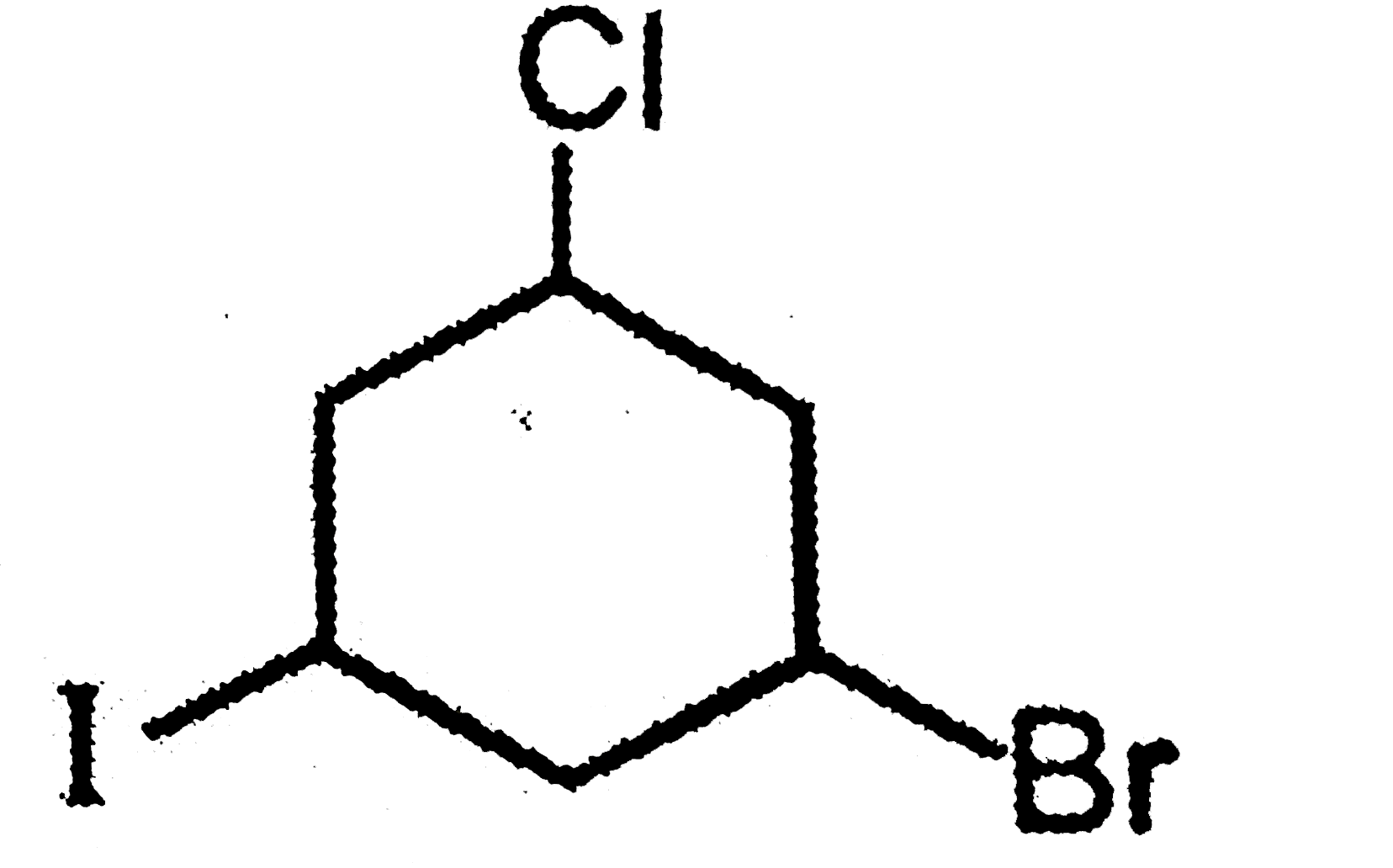How many isomers are possible for monosubstituted and disubstituted benzene?
To determine the number of isomers possible for monosubstituted and disubstituted benzene, we can follow these steps:
Step 1: Understanding Monosubstituted Benzene
- Monosubstituted benzene refers to a benzene ring that has one substituent (like a halogen, alkyl group, etc.) attached to it.
- Regardless of the type of substituent, there is only one way to substitute a single group onto the benzene ring.
Conclusion for Monosubstituted Benzene:
- There is only 1 isomer for monosubstituted benzene.
Step 2: Understanding Disubstituted Benzene
- Disubstituted benzene refers to a benzene ring that has two substituents attached to it.
- The two substituents can occupy different positions on the benzene ring, leading to different isomers.
Step 3: Identifying Possible Positions
- The positions on the benzene ring can be labeled as follows:
- 1 (ortho)
- 2 (meta)
- 3 (para)
Step 4: Counting Isomers
- For disubstituted benzene, we can have the following combinations:
1. Ortho (1,2-): Both substituents are adjacent to each other.
2. Meta (1,3-): The substituents are separated by one carbon.
3. Para (1,4-): The substituents are opposite each other.
Step 5: Total Isomers for Disubstituted Benzene
- The three distinct arrangements (ortho, meta, para) mean that there are 3 isomers for disubstituted benzene.
Final Conclusion
- Monosubstituted Benzene: 1 isomer
- Disubstituted Benzene: 3 isomers
Summary
- Monosubstituted benzene has 1 isomer.
- Disubstituted benzene has 3 isomers (ortho, meta, para).
- Monosubstituted benzene refers to a benzene ring that has one substituent (like a halogen, alkyl group, etc.) attached to it.
- Regardless of the type of substituent, there is only one way to substitute a single group onto the benzene ring.
- There is only 1 isomer for monosubstituted benzene.
- Disubstituted benzene refers to a benzene ring that has two substituents attached to it.
- The two substituents can occupy different positions on the benzene ring, leading to different isomers.
- The positions on the benzene ring can be labeled as follows:
- 1 (ortho)
- 2 (meta)
- 3 (para)
- For disubstituted benzene, we can have the following combinations:
1. Ortho (1,2-): Both substituents are adjacent to each other.
2. Meta (1,3-): The substituents are separated by one carbon.
3. Para (1,4-): The substituents are opposite each other.
- The three distinct arrangements (ortho, meta, para) mean that there are 3 isomers for disubstituted benzene.
- Monosubstituted Benzene: 1 isomer
- Disubstituted Benzene: 3 isomers
- Monosubstituted benzene has 1 isomer.
- Disubstituted benzene has 3 isomers (ortho, meta, para).
Topper's Solved these Questions
- ORGANIC CHEMISTRY: BASIC PRINCIPLES AND TECHNIQUESBOOK - MODERN PUBLICATIONCHAPTER - ORGANIC CHEMISTRY: BASIC PRINCIPLES AND TECHNIQUESEXERCISE - (CONCEPTUAL QUESTIONS 2 )
32 Videos
- ORGANIC CHEMISTRY: BASIC PRINCIPLES AND TECHNIQUESBOOK - MODERN PUBLICATIONCHAPTER - ORGANIC CHEMISTRY: BASIC PRINCIPLES AND TECHNIQUESEXERCISE - NCERT EXEMPLAR PROBLEMS (Multiple Choice Questions (Type - I) )
15 Videos
- ORGANIC CHEMISTRY: BASIC PRINCIPLES AND TECHNIQUESBOOK - MODERN PUBLICATIONCHAPTER - ORGANIC CHEMISTRY: BASIC PRINCIPLES AND TECHNIQUESEXERCISE - (PRACTICE PROBLEMS)
31 Videos
- MOCK TEST-2BOOK - MODERN PUBLICATIONCHAPTER - MOCK TEST-2EXERCISE - SECTION D
1 Videos
- REDOX REACTIONS BOOK - MODERN PUBLICATIONCHAPTER - REDOX REACTIONS EXERCISE - COMPETITION FILE (Objective Questions) (C. MULTIPLE CHOICE QUESTIONS)
9 Videos
Similar Questions
Knowledge Check
How many isomers are possible for butane?
A2B3C4D5How many isomers are possible for hexane?
A4B5C6D7How many isomers are possible for pentane?
A2B3C4D5
How many structural isomers are possible for butane?
View SolutionHow many geometrical isomers are possible for

View SolutionHow many geometrical isomers are possible for

View SolutionHow many isomers are possible for 2- methylpropane?
View SolutionHow many geometrical isomers are possible for

View Solution
